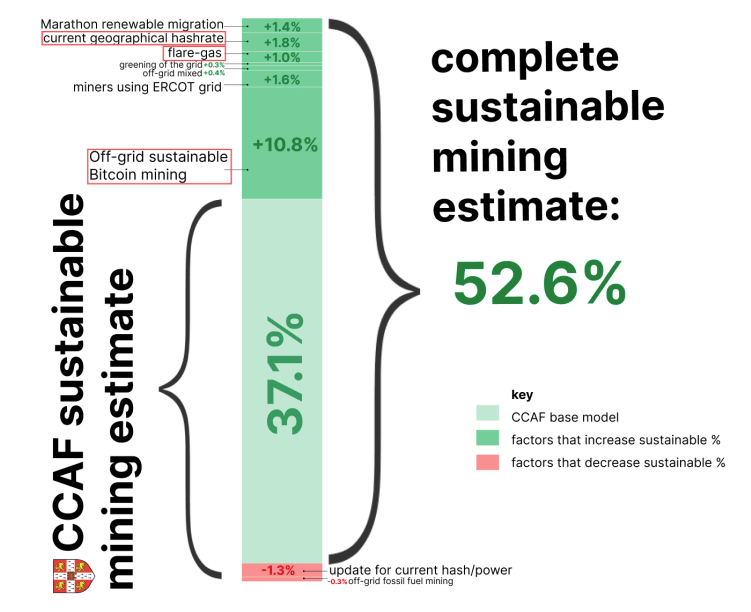- February 20, 2023
- Posted by: admin
- Category: BitCoin, Blockchain, Cryptocurrency, Investments
Amidst the rapid evolution of the high-tech and ever-evolving landscape of Bitcoin mining, an intriguing discovery has emerged from one of the industry’s leading Bitcoin energy researchers.
According to Daniel Batten, author of the Cambridge Bitcoin Electricity Consumption Index (CBECI), three exclusions mentioned on its website have understated Bitcoin’s sustainable energy percentage by 13.6%.

When all is properly tallied, the author of the original study says, Bitcoin’s energy sustainability trickles over the 50% mark, with 52.6% of Bitcoin mining being done sustainably.

The research carried out by the CBECI was introduced to deploy a data-based analysis of Bitcoin’s electricity usage and, in the past, was met with mounting public concern about the issue.
In summary, the CCAF model did not factor in the following:
- Off-grid mining (impact: plus 10.8%)
- Flare-gas mining (impact: plus 1.0%)
- Updated geographical hash rate (Kazakhstan miner exodus, impact: plus 1.8%)
With all exclusions factored in, the sustainable energy mix calculation is 52.6%.
Since 2019, the CCAF’s efforts to broaden the scope of the Index has aimed to provide the foundational elements required for a comprehensive understanding of Bitcoin’s impact on the environment.
How can we be sure that the data is accurate?
The answer to this question can be simulated using a revised model, according to researchers.
For Bitcoin’s true sustainable energy use to be below 50%, at least one of the following scenarios would have to be true:
- Four large Bitcoin mining operations secretly run off 100% coal-based energy.
- ERCOT (The operator of Texas’s electricity grid) has over-reported its true renewable energy numbers by a factor of four.
- Despite the widely-reported exodus of miners from Kazakhstan, its claim on Bitcoin mining increased its share of the global hash rate from 13.2% to 20%.
Researchers say these are based on findings from the original CCAF findings — which go back to 2019 and now need to be revised.
What this means for sustainable mining
With the emergence of a legitimate, data-driven approach to address the concerns raised by the CCAF study, Bitcoin advocates may finally be able to remove the roadblock inhibiting Bitcoin’s adoption among Environmental, Social, and Governance (ESG) investors.
“For the first time, Bitcoin advocates have a legitimate, data-based way to remove the roadblock that the CCAF study has for some time created in the minds of ESG investors.”
The author argues that this may also impact policymakers who look at the report.
“Past the first hurdle, proponents of Bitcoin can ask the next two big questions that ESG investors and the White House have: Is Bitcoin’s macro-trend quantifiably moving toward sustainable energy? And is Bitcoin quantifiably a net positive to the environment and society?”
With the Cambridge report’s revised findings into the sustainability of Bitcoin mining, Bitcoin advocates and ESG investors can argue that original proof-of-work cryptocurrency is primarily sustainable, potentially positioning it as a leader in sustainable energy adoption across all industries.
The post Over 52.6% of Bitcoin mining now powered by sustainable energy appeared first on CryptoSlate.
